Photo credit: Google
Gmelina arborea
Epidermal structure and ontogeny of stomata in some Verbenaceae
by Inamdar J. A. (1969)
Department of Botany, Sardar Patel University, Vallabh Vidyanagar, India
in Annals of Botany. 71(4) 323-370. –
Epidermal structure and ontogeny of stomata, Ani Mulyani.pdf
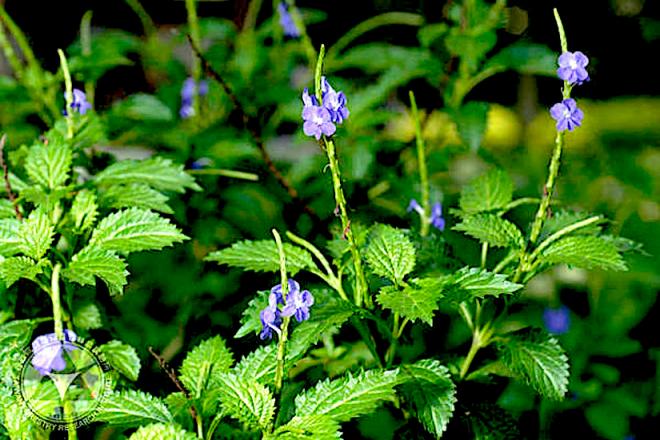
Abstract
The present paper deals with epidermal structure and development of stomata in 14 species of Verbenaceae.
The epidermal cells are either polygonal, isodia- metric, or elongated in various directions, and irregularly arranged. The anti- clinal walls are thick, mostly sinuous, occasionally arched or straight. The surface of the cuticle shows parallel, rarely corrugated, striations. Some 12 types of eglan- dular and glandular trichomes, and foliar nectaries are noticed.
The mature stomata are diacytic, anisocytic, paracytic, with a single subsidiary cell, anomocytic and perigenous.
The development of anomocytic stomata is perigenous, while that of others is mesogenous or syndetocheilic type.
Abnormalities noticed here include contiguous stomata, stomata with a single guard cell, and aborted guard cells.
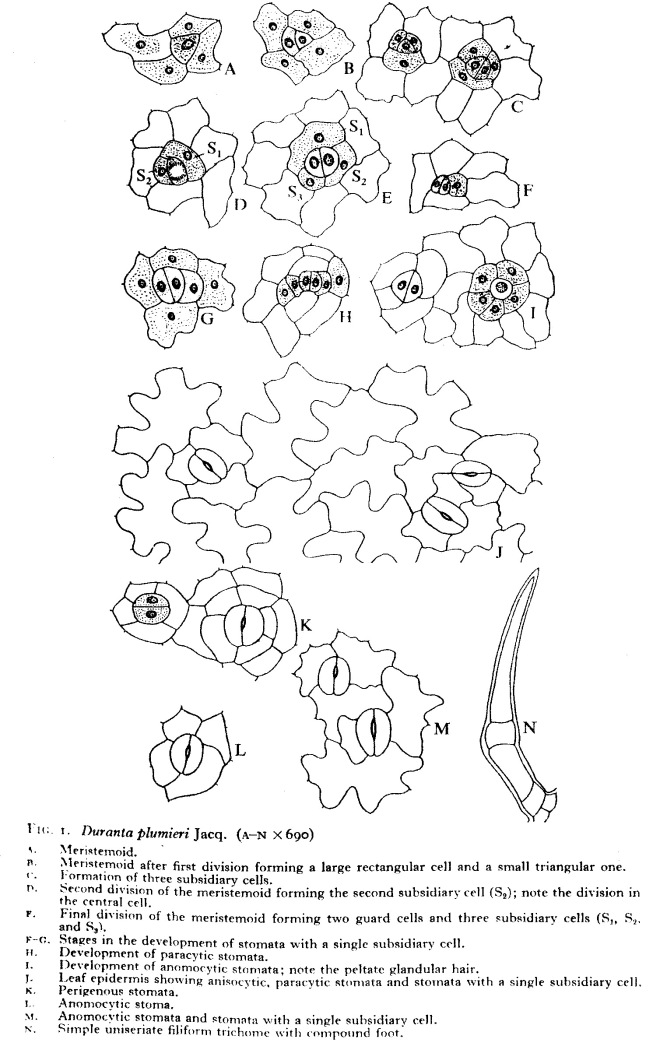

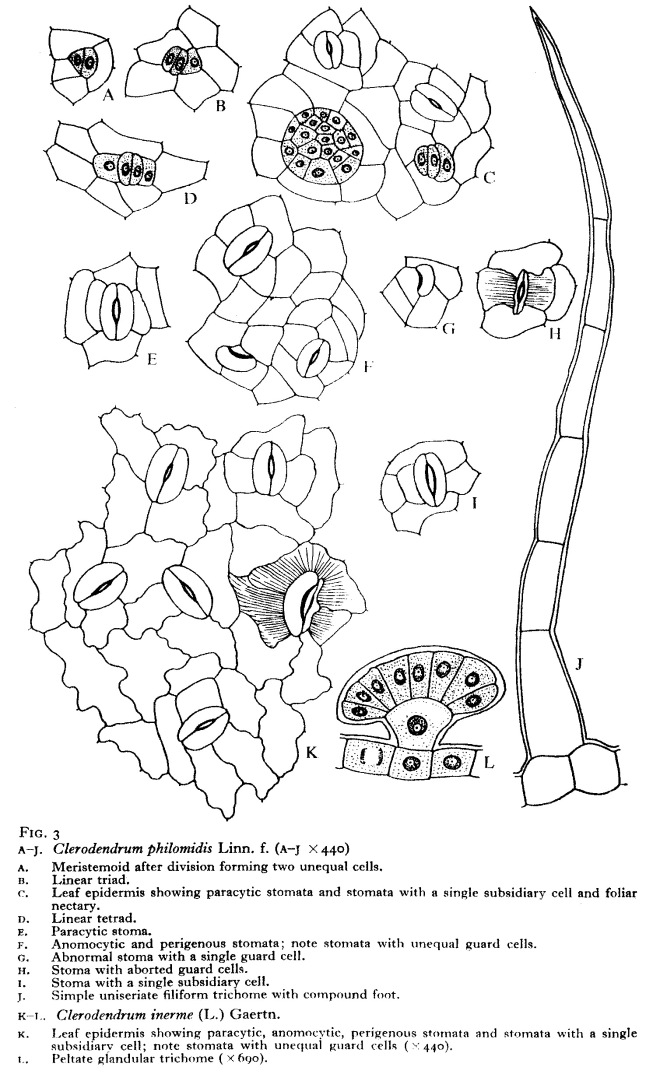
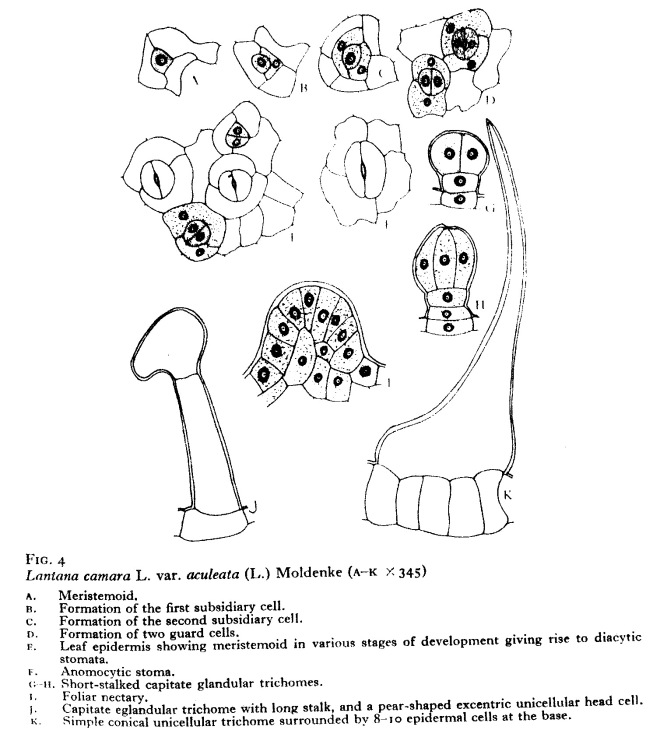
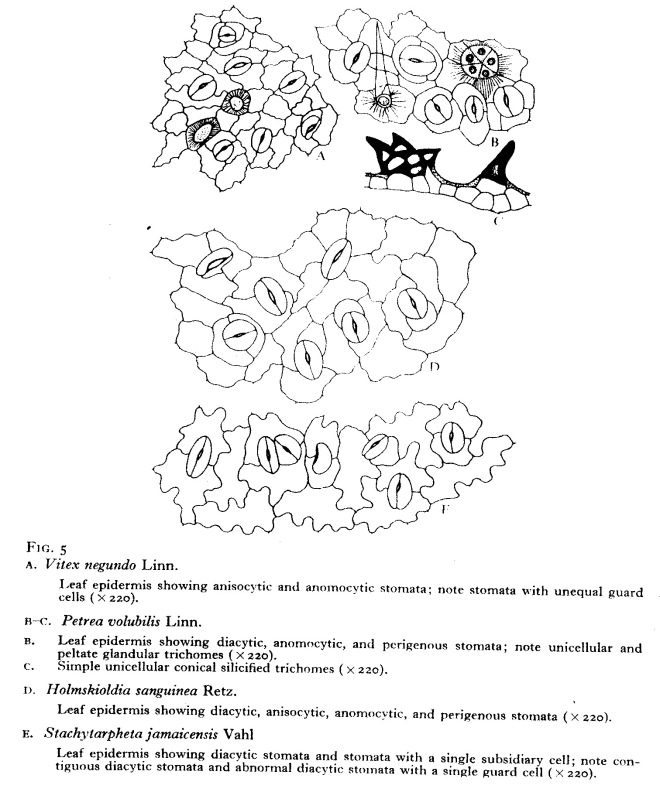
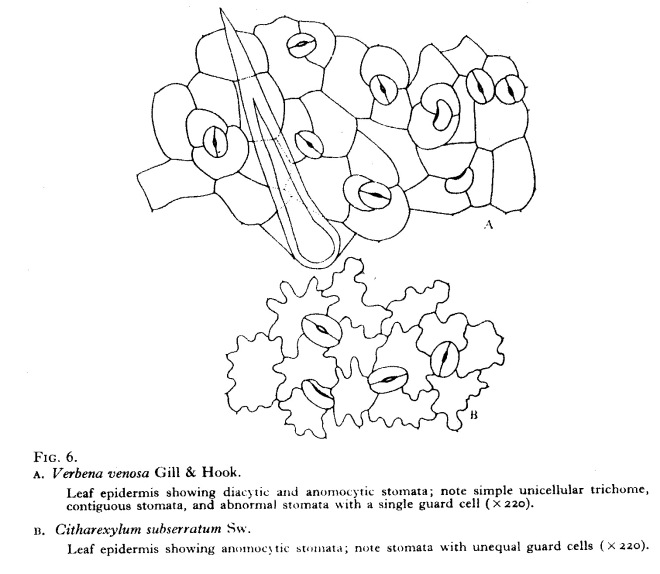


You must be logged in to post a comment.